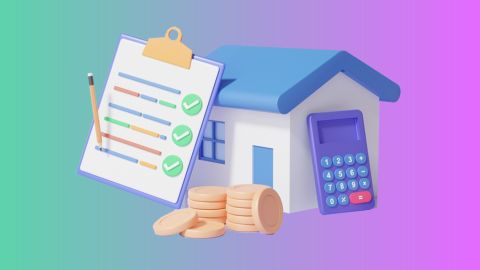When you take a mortgage, one key aspect to consider is the stamp duty on the mortgage deed. This duty is a tax levied by the government on legal documents, making them legally enforceable. Paying this duty is crucial for validating your mortgage agreement. The amount varies across states in India and depends on the loan amount and property value. Understanding the intricacies of stamp duty can help you manage your finances better when applying for a Loan Against Property with Bajaj Finance.
The stamp duty on a mortgage deed ensures that the document is legally valid and enforceable in court. This duty is mandatory, and non-payment can result in legal complications. The process might seem complex, but it is essential for securing your property rights and loans. Whether you are purchasing a home or taking a Loan Against Property, knowing about stamp duty can save you from future hassles.
Importance of paying stamp duty on mortgage deed
Paying stamp duty on your mortgage deed is not just a legal formality but a critical step in securing your property transactions. Here is why it is important:
- Legal validation: Stamp duty validates your mortgage deed, making it legally binding.
- Avoiding penalties: Non-payment can lead to hefty fines and legal issues.
- Property transfer: It facilitates the smooth transfer of property ownership.
- Loan approvals: Essential for processing loans without any obstacle.
State-wise stamp duty rates for mortgage deed
Understanding the state-wise variation in stamp duty rates can help you prepare better. Here is a quick look at some key states:
State |
Stamp duty rate |
Maharashtra |
3% to 5% |
Karnataka |
5% |
Delhi |
4% for men, 3% for women |
Tamil Nadu |
7% |
West Bengal |
5% |
How to calculate stamp duty on a mortgage deed?
Calculating stamp duty can be simple if you follow these steps:
- Check state guidelines: Stamp duty rates vary by state, so it's important to refer to your state’s specific guidelines for accurate rates.
- Consider the loan amount: Stamp duty is usually calculated as a percentage of the loan amount, which can differ based on the property type or location.
- Evaluate property value: Higher property values often attract higher stamp duties, so it’s essential to factor this in when estimating costs.
- Use online calculators: Utilise online tools like the loan against property EMI calculator to easily estimate stamp duty costs based on your property’s value and location.
Formula for stamp duty calculation:
Stamp duty = (Loan amount or property value) × Stamp duty rate (%)
Factors affecting stamp duty rates:
| Factor | Description |
| State regulations | Different states have varying rates and regulations for stamp duty on mortgage deeds. |
| Property location | Urban properties typically have higher stamp duties compared to rural areas. |
| Loan amount | The larger the loan amount, the higher the stamp duty. |
| Property type | Residential properties might have different rates compared to commercial properties. |
| Owner’s gender | Some states offer lower rates for female property owners. |
Procedure to pay stamp duty on mortgage deed:
Paying stamp duty is a straightforward process if you follow these steps:
- Document preparation: Prepare the mortgage deed with accurate details.
- Assessment: Get the deed assessed by the local sub-registrar.
- Payment: Pay the stamp duty through e-stamping, demand draft, or cash.
- Submission: Submit the stamped deed to the sub-registrar for registration.
Understanding and paying stamp duty on a mortgage deed is essential for legal and financial security. By knowing the rates, calculating accurately, and following the payment procedure, you can ensure a hassle-free experience. This is particularly important when leveraging financial products like Bajaj Finserv Loan Against Property.
Stay informed and prepared to handle your property transactions with confidence.




